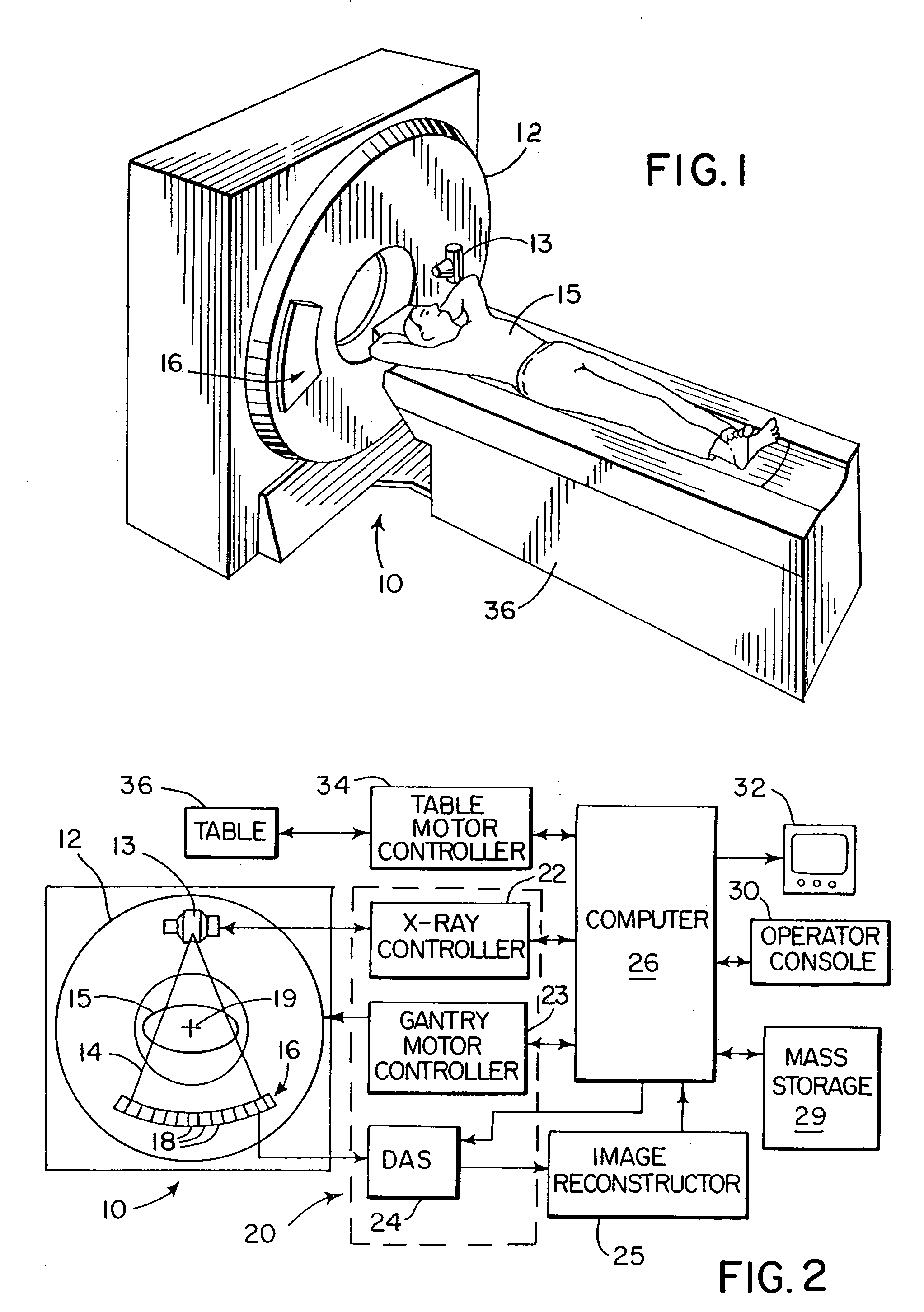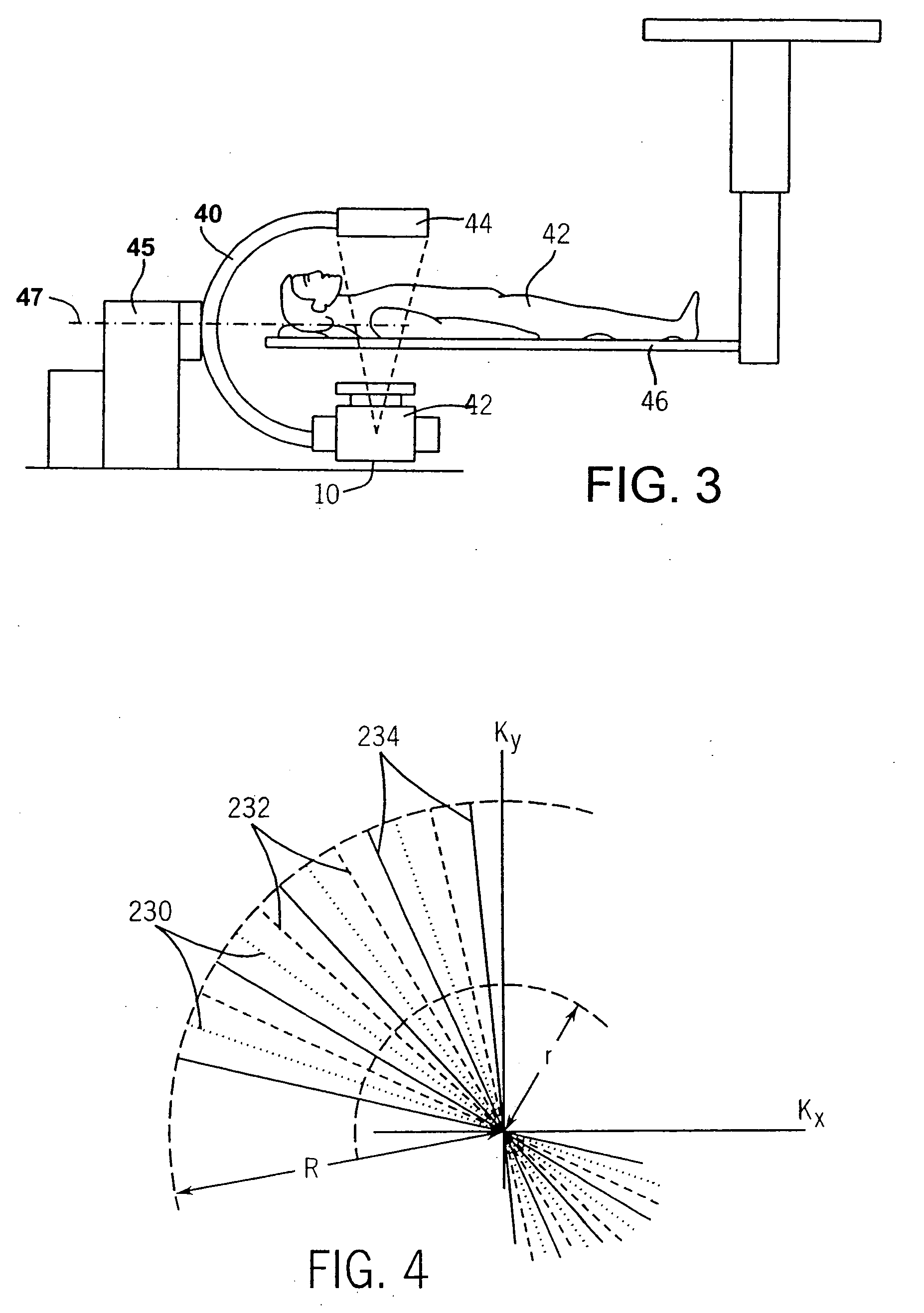Backprojection reconstruction method for CT imaging
a reconstruction method and image technology, applied in tomography, instruments, applications, etc., can solve the problems of x-ray dose to which the subject is exposed, application is particularly challenging, and cannot be used with this cra method intravenously, so as to increase the time resolution of the study, increase the snr of each image frame, and improve the effect of image reconstruction
- Summary
- Abstract
- Description
- Claims
- Application Information
AI Technical Summary
Benefits of technology
Problems solved by technology
Method used
Image
Examples
second embodiment
[0041] Referring to FIG. 3, a CT scanner which may employ the present invention comprises a C-arm 40 to which the two-dimensional detector 44 and X-ray source 42 are mounted. Here, again the patient 42 is positioned on a table 46. The C-arm 40 is rotationally mounted to a base 45, and data for the generation of three-dimensional images is obtained by rotating the X-ray source 42 and detector 44 around a defined axis 47. CT scanners of the type shown in FIG. 3 are particularly useful in angiography, as described in Use of a C-Arm system to generate True 3D Computed Tomography Rotational Angiograms; Preliminary in vitro and In vivo Results. R. Fahrig, S. Lownie, and D W Holdsworth, AJNR 18:1507-154, September 1997.
[0042] In the above described CT system a single x-ray source is revolved around the subject during a scan and the time resolution of each acquired image frame is limited by the time required to rotate the gantry through a substantial angle. This is necessary when an under-s...
first embodiment
[0069] Prior to reconstructing the perfusion images a high resolution composite image is reconstructed as indicated at process block 412. This is a conventional filtered backprojection reconstruction using the difference projection views from all of the acquired image frames. Since the image frames are acquired at interleaved view angles in the first embodiment, collectively they provide a complete sampling of Radon space and an artifact-free, high SNR composite image can be produced with a standard reconstruction method. In the second approach described above the corresponding low-dose views acquired for each image frame are averaged to provide a higher SNR composite image than would otherwise be produced from one complete set of low dose views.
[0070] The series of time resolved perfusion image frames are then reconstructed and displayed. A loop is entered in which the limited set of difference views that comprise an image frame are backprojected using the highly constrained method...
PUM
 Login to View More
Login to View More Abstract
Description
Claims
Application Information
 Login to View More
Login to View More - R&D
- Intellectual Property
- Life Sciences
- Materials
- Tech Scout
- Unparalleled Data Quality
- Higher Quality Content
- 60% Fewer Hallucinations
Browse by: Latest US Patents, China's latest patents, Technical Efficacy Thesaurus, Application Domain, Technology Topic, Popular Technical Reports.
© 2025 PatSnap. All rights reserved.Legal|Privacy policy|Modern Slavery Act Transparency Statement|Sitemap|About US| Contact US: help@patsnap.com



